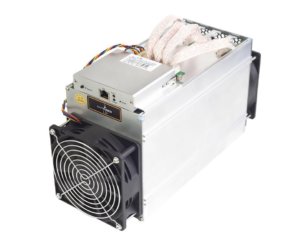Will European regulators push retail trading onto OTFs? Abide Financial’s Mark Kelly investigates
By Mark Kelly, Mark Kelly, Director at Abide Financial Taking a close look at the MiFID 2 rulings which are scheduled to come into effect in January 2018, Mark Kelly, Director of Abide Financial, investigates the potential impact of the new rulings surrounding OTFs – Organized Trading Facilities – and how OTC derivatives trading relates to the […]

By Mark Kelly, Mark Kelly, Director at Abide Financial
Taking a close look at the MiFID 2 rulings which are scheduled to come into effect in January 2018, Mark Kelly, Director of Abide Financial, investigates the potential impact of the new rulings surrounding OTFs – Organized Trading Facilities – and how OTC derivatives trading relates to the new directive.
It is not only reporting firms who are struggling to make sense of the new market structures which MiFID 2 will introduce in January of 2018.
Requests for clarification to a number of National Competent Authorities have elicited sufficiently vague replies as to give the impression of a degree of uncertainty on their part too.
What follows is therefore based on an interpretation of the rules and guidance which have been published by ESMA to date, but with a heavy dose of interpolation and extrapolation. I have been looking in particular into the possible impact of the new markets on the retail derivatives firms, such as CFD and binary options brokers.
What survives from the original MiFID 1 market structure are the regulated markets, multilateral trading facilities (MTFs) and Systematic Internalisers.

New for MiFID 2 are the Organised Trading Facilities or OTFs, which is where the crystal ball is most needed. Regulated markets and MTFs will not be surprised by most of the MiFID 2 requirements, although some features, such as transaction reporting from the perspective of exempt market participants are likely to prove a major challenge.
The Systematic Internaliser regime was a feature of MiFID 1 which was largely ignored by most of the market, as it had rather vague and unquantified qualification criteria.
It was also limited to off-exchange trading in equity instruments. Under MiFID 2 this regime is subjected to clear entry criteria and far more stringent demands, including pre and post trade transparency (ie publishing both quotes and just-traded prices) and reference data submission to NCAs on a nightly basis, as well as the normal T+1 transaction reporting requirement.
It is also extended to non-equity products, such as fixed income and derivative instruments.
What seems clear is that in an effort to move as much financial activity as possible onto transparent regulated markets, MTFs and OTFs, ESMA has gone down the route of making off-exchange trading as onerous as possible.
Even non-SI investment firms trading listed products off-exchange may be required to report post-trade details to an Authorised Publication Arrangement or APA.
How the SI regime will work for equity-like instruments is fairly well-understood.
How it will apply in the non-equities world is a source of some confusion.
The bond market routinely sees instruments listed on-exchange but traded in bilateral deals between firms. Does this mean that all bond trading houses will need to at least publish their sales to an APA or potentially even register as an SI? That is the clear implication of the rules.
The applicability of the SI regime to derivatives is even murkier. There appear to be three rules of thumb for needing to register as an SI:
You need to be trading customer orders. High Frequency Trading firms will not need to be SIs despite the fact that they are trading against their own book, as none of their trading is on behalf of clients
Those customer orders need to be for the acquisition or disposal of instruments already listed on a venue (RM, MTF or OTF). SIs will not be allocating ISINs to new products they create, but rather diverting the flow of customer orders in venue-listed products to their own books. Retail derivatives firms creating bilateral CFDs based on an underlying instrument are satisfying customer orders, but are not diverting any trading in the underlying instruments from the venues where they are listed, so would not be expected to register as SIs.
The diversion of client trade flow from venues to the firm’s own books must occur over a given percentage of the time (or represent over a given percentage of the market as a whole) to trigger the requirement to register as an SI in the specific product involved.
Post-trade publication by the seller will be required below this threshold, but the other SI requirements will not be triggered.
The above is the necessary preamble for the key question relating to derivatives, which is how can a venue-traded derivative be filled off-exchange from a firm’s own books?
An equity or bond is a transferable security, which a firm can hold in inventory and enter into a negotiated trade which settles without any exchange involvement.
An exchange-traded derivative is a contract with a specific exchange, however long the execution chain, and cannot be held and traded off-exchange without changing the nature of the instrument (for example by issuing a CFD based on the price movement of the traded contract).
The above quandary may simply reflect an imperfect understanding on my part as to how ETDs actually work, but if so I would sincerely like someone to enlighten me as to how the Systematic Internaliser regime can be applied to the derivatives sector.
The Organised Trading Facility (OTF) has been created specifically to encourage the on-exchange trading of derivatives which might previously have been traded on a bilateral OTC basis.
The OTF will bring together buyers and sellers, with the OTF providers being prohibited from filling any orders from their own books (unlike Systematic Internalisers, who are permitted to do this). Bilateral derivatives can continue to be traded OTC unless the instrument is subject to the MiFID 2 venue trading obligation.
This in turn cannot be applied unless a pre-existing EMIR clearing obligation has entered into force. In the short term therefore only certain categories of Interest Rate Swaps will be subject to an on-venue trading obligation, as the clearing requirement under EMIR has somewhat stalled.
Apart from European equivalents of the US Swap Execution Facilities, becoming an OTF will therefore be a largely voluntary commitment.
Candidates for a fixed income OTF have already emerged and it is possible that current derivative MTFs may decide that the OTF structure is a better fit for their business. At the recent IFX Expo in Cyprus I suggested that some of the binary options exchanges might be required to register as OTFs.
If true, this would impact not only the exchanges, but also the brokers who use them, who would now be trading a venue-listed product and would need to transaction report irrespective of the underlying asset.
However, having discussed their business model with some of the affected firms it seems that their exchange categorisation may be more a matter of perception than substance, and the firms involved may be taking proprietary risk on every transaction.
Re-branding themselves as liquidity providers for both buyers and sellers rather than exchange-like platforms may be a prudent approach if such firms wish to avoid walking blindly into a mesh of additional obligations in January 2018.
Photograph: Royal Exchange, London. Copyright FinanceFeeds









